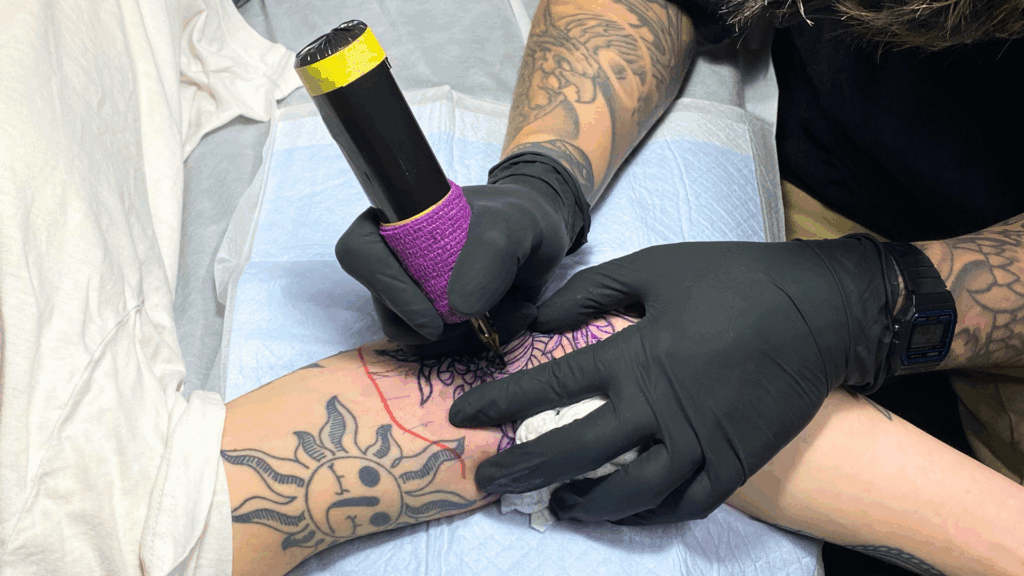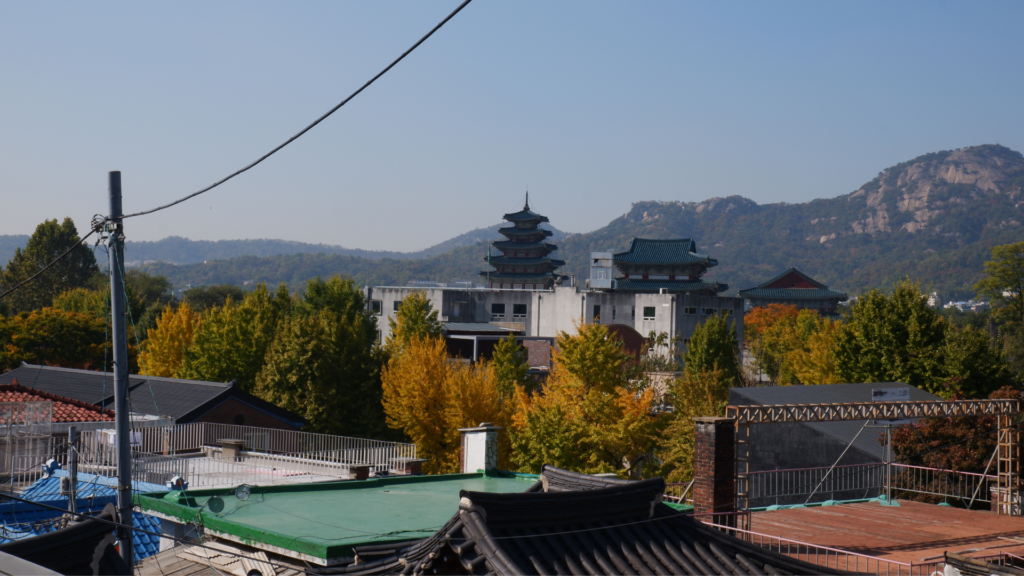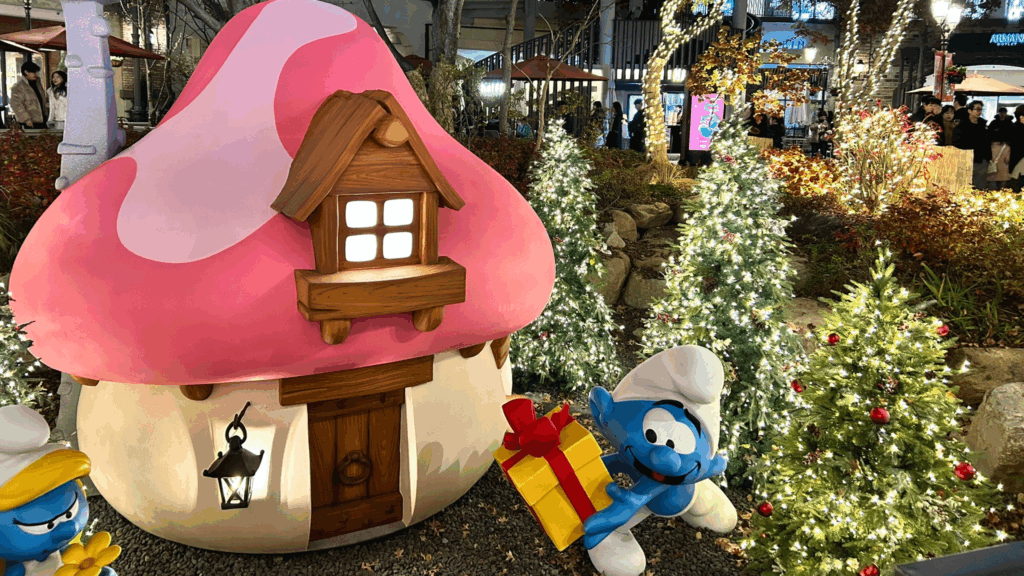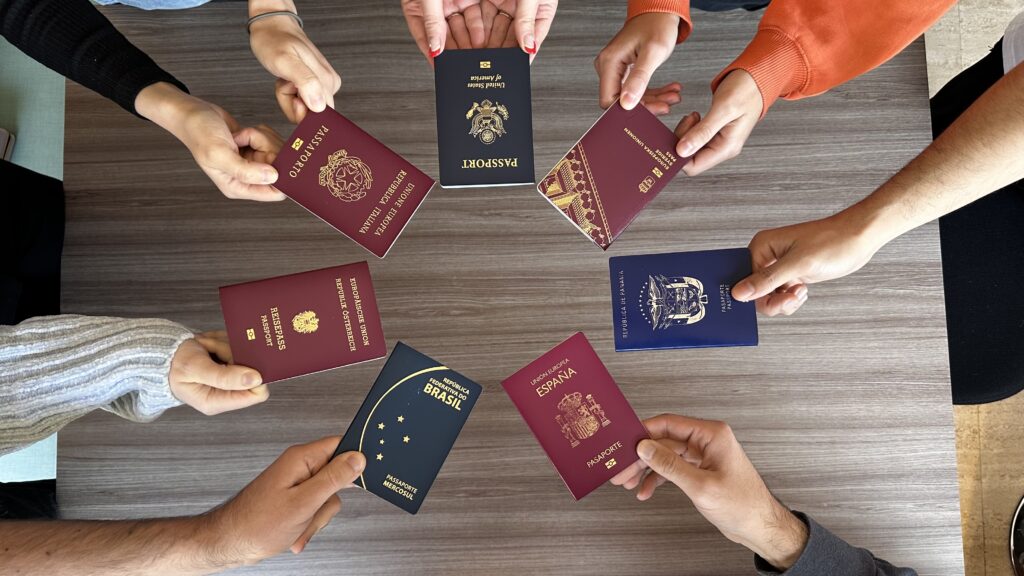Korean food is becoming increasingly popular, and it really is delicious! However, eating at a Korean restaurant for the first time can be intimidating. If you’re eating at a Korean restaurant for the first time, here are some Korean restaurant tips to make sure you have an awesome time and are able to focus on the incredible food without stressing about the details.
Here are 8 tips for eating at a Korean restaurant
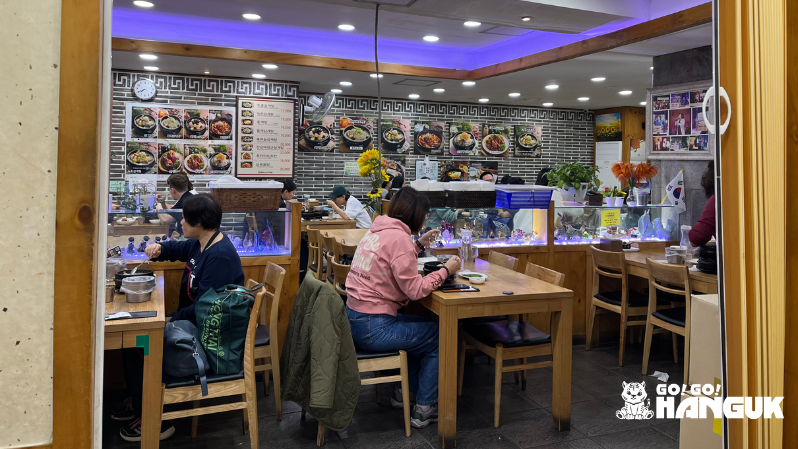
1. What kind of Korean restaurant is it?
Korean food is obviously diverse, and restaurants will often specialize in one or two signature dishes. They also might just be general Korean food, or they might be something like samgyetang (삼계탕, chicken soup), gamjatang (감자탕, pork backbone stew), naengmyeon (냉면, cold noodles ), etc. Have a look at what type of food they’re serving and do some research before eating at a Korean restaurant.
One popular type of restaurant is Korean barbecue, often just called samgyeopsal (삼겹살), the name of the pork commonly eaten there. Here, food is always shared, as opposed to 1 serving per person as it might be at other restaurants. Korean barbecue often involves drinking beer or soju (소주) along with the meal. Though pork may be the main feature, depending on the restaurant, other meat and vegetables can be grilled as well.
2. Making reservations
Same as other countries, local restaurants don’t require a reservation, but new or popular ones do. Mokran (목란), the Yeonhui-dong (연희동) restaurant owned by celebrity chef Lee Yeon Bok, requires reservations to be made 3 months in advance, for example. His restaurant became popular after he starred on the show “Please Take Care of My Refrigerator” (냉장고를 부탁해).
If you’re eating at a Korean restaurant for the first time, remember to try to make a reservation or you will expect long waits at hot spots.
 3. Getting to know the menu
3. Getting to know the menu
Menus in major cities in Korea will often, but not always, have some English on them. Food is generally grouped into categories, such as soups, noodles, types of meat, etc. Take a look at our interactive Instagram post to learn how to read a menu in Korean.
In Korea, the price will include taxes already, so what you see listed is the final price. If you’re unsure of what would be best when eating at a Korean restaurant for the first time, feel free to ask for a recommendation! This can be done by saying “chu cheon hae ju se yo” (추천해주세요, “Give me a recommendation please”).
The many different side dishes, called banchan (반찬) will be brought to your table without you having to order them. They are usually unlimited, so definitely ask for a refill!
4. Ordering food
Once you know what you would like to order, look for the small red or black bell on the side or corner of each table. In medium and larger restaurants, there will often be an electronic bell that you can use to call a server. This conveniently stops you from having to shout when you need something.
If there isn’t a bell, you can also say “over here”, which is “yeoh gi yo” (여기요). Once you are ready to order, you can also say “I will order now”, which is “ju mun hal gge yo” (주문할게요).
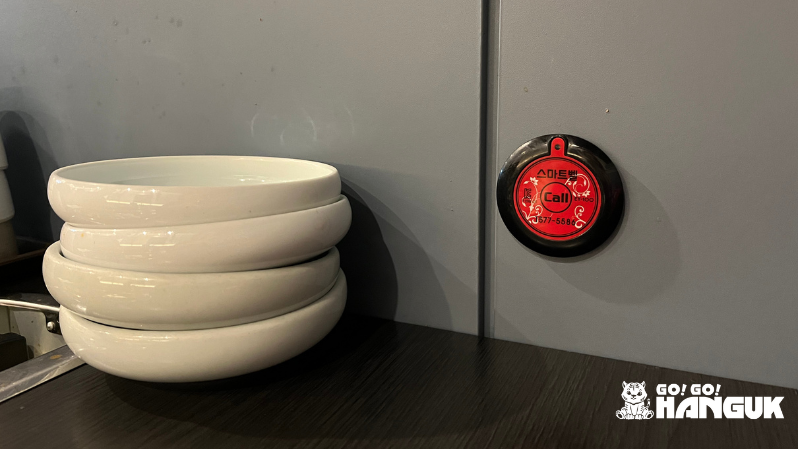
5. Setting up the table
If it is your first time eating at a Korean restaurant, there are some table etiquette you should bear in mind. Before the food arrives, take a minute to set your table. Place a small napkin in front of each diner along with a pair of chopsticks and a spoon. This is often done by the youngest person there, but anyone can take the lead in doing it. Though restaurants are often very clean, we recommend putting your utensils on the napkin instead of directly on the table.
Next, pour a glass of water for everyone, pouring for the oldest person first and yourself last. You can find the napkins and utensils often in a little box on the table, or in a drawer underneath. The water will be brought to you along with cups, or you can ask the server for it. When you need a refill, feel free to say “mul jom juseyo” (물 좀주세요). Sometimes the water will be self-serve; even if you’re eating at a Korean restaurant for the first time, you’ll be able to tell if you see a large water dispenser and a sign that says “셀프입니다”.
Food is usually shared from the main dishes brought to the center of the table. If you want to scoop a portion out onto your own plate, you can ask for an abjeopshi (앞 접시). The servers will bring you a small dish that you can use as your own.
6. Once your meal arrives
Your delicious food is here! At the beginning of the meal, you can start with kind of complimenting the chef and saying “I will eat well”, jal meo gge sseum nida (잘 먹겠습니다). It’s thanking them for their hard work to cook for you. Perhaps this gesture might be a little awkward when eating at a Korean restaurant for the first time but you’ll get used to it!
If it’s something with noodles, long vegetables like cabbage, or larger pieces of meat, there are usually scissors available to cut it into smaller pieces. Don’t be shy about this, feel free to cut any of your food so that it’s a more bite-size piece. Kimchi can also be cut this way, but keep in mind that the scissors should only be used for food-related items.
If your food is Korean barbecue or anything grilled, also ask for your grill to be changed halfway through your meal. It can get charred from the meat and sauces cooking on the surface. The server will change it so that you can start clean again. Don’t be afraid to request even if you’re eating at a Korean restaurant for the first time!
7. After your meal
If it’s a restaurant that’s primarily serving food, Koreans tend to not linger and eat quickly, and then go to a second place (like a bar or coffee shop) to hang out and talk. If it’s a restaurant where drinks are often served with the meal, it is common to sit and enjoy the atmosphere.
After the meal, instead of saying the Korean translation of thank you, you can say “I ATE well”, 잘 먹었습니다 (jal meo geo sseum nida). You can say this in restaurants, especially if someone has personally cooked for you.
8. Making payments
Your bill will be brought to your table when you first order. Any time you order more items, whether drinks or food, it will be updated. When you’re ready to pay, feel free to pick it up and take it to the cashier. The bill includes tax and the prices should match what you saw in the menu. There likely won’t be extra charges when you go to pay.
When done eating at a Korean restaurant, tips are not generally given in Korea, and usually just lead to confusion if you try to give more money than is on your bill. It absolutely will not be expected, and no one will think it is weird or cheap if you only pay for your meal. If you’re really committed to paying something extra, you could give a larger bill and say that you don’t need change, say $20 when your total was only $18. Regardless, however, it’s probably easier to not pay a tip.
These days, almost every place in Korea will be able to take a credit or debit card. Other cashless payments are also widely accepted, check out our article on ways to go cashless in Korea here! However, some small restaurants still only use cash. Some restaurants will ask for you to pay as soon as you order, instead of when you leave. This is much less common, but if it happens, it’s not something to worry about.
Now you’re ready to try eating at a Korean restaurant and see what you like! Share with us some of your favorite Korean food when you visit!
If you’re keen to find out how we can help you study and live in Korea, be sure to contact us or find more out in this article. Also, don’t forget to follow the Go! Go! Hanguk blog for more content!

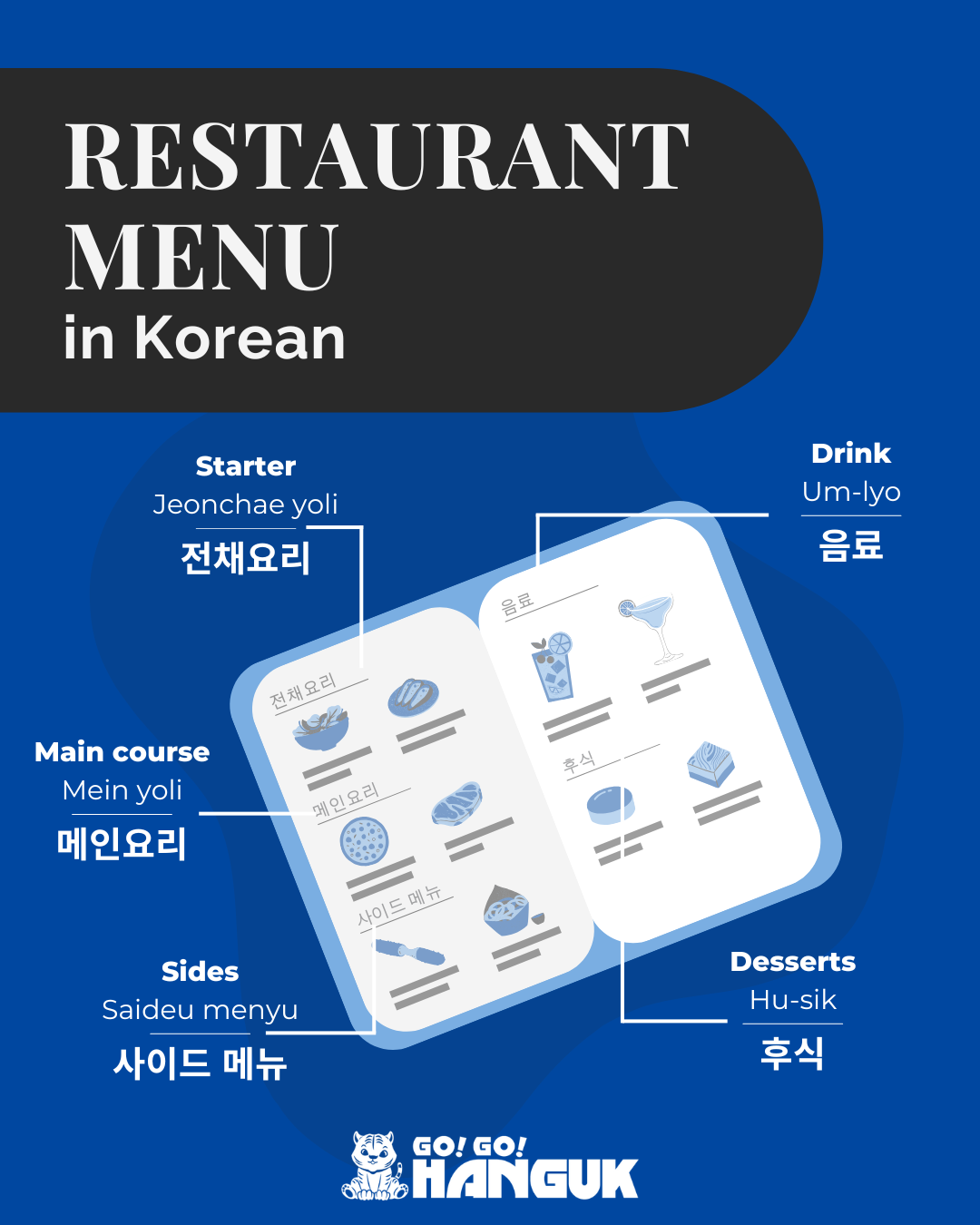 3. Getting to know the menu
3. Getting to know the menu